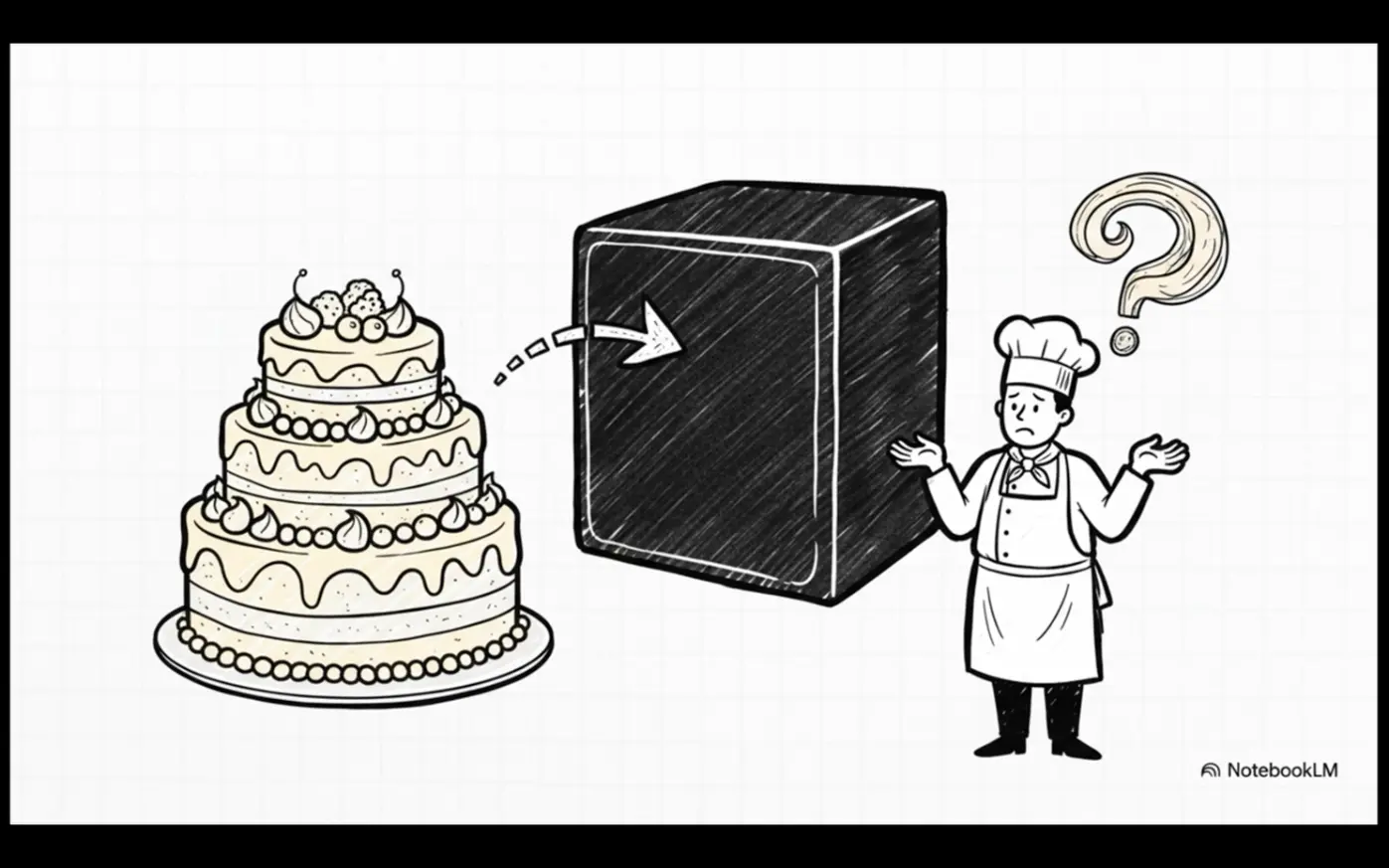It just… happened.

That baker is today’s AI. Every time it generates a result, it reproduces its genius without understanding its own method — burning oceans of computation to approximate meaning it never truly grasps.
So, who steps in to make sense of the masterpiece?
Four experts. Each trying to decode what the baker cannot explain. Just like four different AI interpretability researchers, each seeing only part of the system's reasoning.
🔪 The Chef looks for texture, structure, and precision — the craft. 🥗 The Nutritionist measures sugar, protein, fat — the biology. 💰 The Economist calculates cost, time, and margin — the economics. 🌍 The Environmental Scientist traces its carbon footprint — the planet's cost.
Four minds, one cake. Each revealing a different layer of meaning — yet they're all describing the same creation.

The Semiotic Web — the architecture we're building at tokum.ai — is what happens when the baker finally understands its own recipe.
Not by reverse-engineering the cake after it's baked (that's XAI). Not by memorizing millions of similar cakes (that's RAG).
But by separating the recipe (atomic definitions) from the interpretation (contextual meaning) at the architectural level.
When you build AI on explicit meaning rather than statistical fog, something remarkable happens.
It redefines "understanding" — turning opaque generation into transparent comprehension. By mastering semiosis — the process of meaning-making — AI stops re-guessing reality and begins to reason across it.
And the effects aren't abstract. They're measurable. When you eliminate 96% of semantic retraining, replace 100% of RAG infrastructure, and cut 90% of explainability overhead, the numbers speak for themselves:
Once meaning becomes shared and verifiable, three things happen instantly:
1️⃣ Training collapses. 96% eliminated. $48B saved annually across the industry.
2️⃣ Retrieval disappears. RAG becomes architecturally obsolete. $20B saved.
3️⃣ Energy waste implodes. 35 TWh saved = four nuclear plants' annual output + 10.6 megatons CO₂ avoided.
Same performance. Often better. But fundamentally different architecture.
The question isn't whether this is possible. The architecture exists. The math works. tokum.ai is building it.
The question is: what becomes possible when AI moves from approximation to genuine comprehension?
📖 Read the full investigation (33-minute read):
"Reading Between the Lines: What Your Brain Reveals About the Future of AI"
🎥 Watch the 8-minute video breakdown:
For a concise visual summary of the concepts in this article, watch our 2:17 video breakdown. Discover how the Semiotic Web transforms AI from a black-box approximator into a transparent, meaning-centric system that understands the recipe—slashing energy use and unlocking genuine comprehension:
#ArtificialIntelligence #SemanticWeb #AITransparency #SustainableTech #TechInnovation